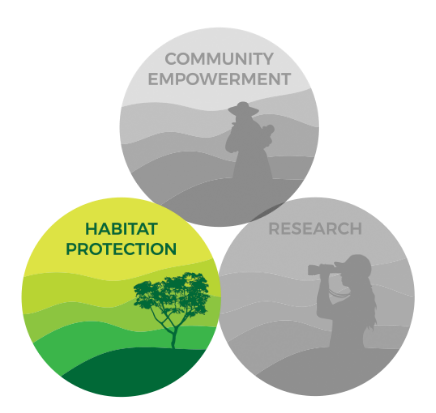MAKE A GIFT TO PROTECT THE ONLY BEAR IN SOUTH AMERICA
![]()


Spectacled bears require large, continuous and intact habitat to successfully feed, breed and maintain healthy populations. The forests of northern Peru are also some of the most biodiverse and important ecosystems in the world.
Habitat protection ensures both the availability of suitable habitat for spectacled bears and the preservation of plant and animal diversity. Protecting habitat also protects all of the healthy functions ecosystems provide for people such as climate regulation, water provision and maintaining soil quality.
Creating protected areas is the foundation of spectacled bear conservation. It’s also complex business.
To create protected areas of pristine spectacled bear habitat and connectivity between them, we not only work across ecosystem and natural boundaries, we also traverse different political jurisdictions, land ownership and land use interests. Our scientists use our research findings to identify prime habitat areas that need protection. Our approach to creating protected areas changes depending on the type of existing land ownership:
Creating protected areas is only the first step. Significant resources are required to manage these areas to ensure wildlife are using them as expected and to monitor potential threats and future impacts from encroachment of human development or industry. Expanding protected areas requires current scientific data to inform evidence-based decision making. Local authorities often lack the resources to proactively manage protected areas.
Our research contributed to the ecological factors considered by National Museum of Sican and the municipality of Pitipo to create El Parque Arqueológico y Ecológico de Batán Grande (the Archaeological and Ecological Park of Batán Grande) in 2016. Data points from GPS collared spectacled bears helped to determine the extent of critically endangered dry forest habitat used by the bears. This park recognizes and preserves 34,000 acres of critically endangered dry forest habitat and connects to the Laquipampa Wildlife Refuge, adding to a corridor of continuous habitat.
We received a long-term permit to conduct scientific investigation on spectacled bears in any national park in Peru. We support local authorities in a few different ways including: training park personnel on data collection; conducting studies to provide information that guides their management decisions; and providing species inventories and detailed information on wildlife threats such as poaching.
![]()